- posted: May 28, 2013
Glycemic Index uses. 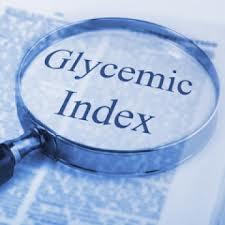 Glycemic index is a very popular way of anticipating the "blood sugar rise" effect after eating certain foods. Different food sources may have the same number of total calories per portion, but have different "sugar raising effect" on the same person. The measure of this rise, as compared to the blood sugar rise caused by pure glucose portion, is called the Glycemic Index.
Glycemic index is a very popular way of anticipating the "blood sugar rise" effect after eating certain foods. Different food sources may have the same number of total calories per portion, but have different "sugar raising effect" on the same person. The measure of this rise, as compared to the blood sugar rise caused by pure glucose portion, is called the Glycemic Index.

You will find a lot of information in books and on the internet , lists, explanations of Glycemic Index and the related measure, Glycemic Load. Also, complicated measures of carbohydrate grams per weight in grams or per 1 /2 cup serving and per number of calories. Glycemic index is used most commonly for diabetic diets and lifestyles to "painlessly" , without a lot of sacrifice, decrease the over-all sugar effect of the diet. My experience, and that of my hundreds of weight loss and management patients, is that "you can't have your Glycemic Index Cake and eat it too!"
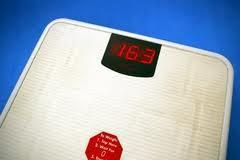
Glycemic index for Weight Loss: THIS ISSUE is dedicated to weight loss and weight maintenance warriors. This program is geared more towards non-diabetics, and diabetics, who want to have success in weight loss and management. For those of you who have gone through our weight loss and management program... you know that you can work with your body to achieve desired health and weight goals in a sustainable manner....it just takes understanding your body and how it is effected by various foods. Sounds easy enough?
The standard way of breaking down foods in Glycemic index categories, is into LOW, MEDIUM and HIGH Glycemic index categories. This way, diabetic patients can anticipate how blood sugar levels and corresponding insulin requirements will be effected; If pure Glucose portion is ingested then the Glycemic index( G.I.) for Glucose is set at G.I. 100. Most foods generally fall below 100:
- Low G.I. Under 55
- Medium G.I. 56 to 69
- High G.I. 70 to 100+
-
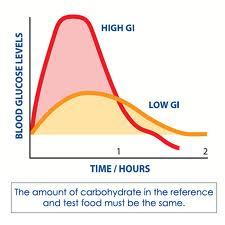
We want to use the power of knowledge of the intense, immediate and varied effects that carbohydrates, proteins, fats and complex carbohydrates have on our Fat making/Fat burning biochemistry and hormone messengers. There exists the exciting ability to control the messages we directly send our body on a daily , hourly basis to MAKE FAT or to BURN FAT!
Glycemic Load : From clinical experience and observation over many years, my patients and I have found that for effective weight-Loss and weight-management , we need a different way to use the Glycemic index. The Glycemic Load (GL) is a measure which takes account of the Glycemic Index of a food and the available carbohydrates in the food. Although very useful , these values are not as available or easy to calculate "on the fly" for weight loss or maintenance participants. The easiest way to make use of GI from our experience at our Wellness Clinics for short and intermediate weight nutritional goals is to subdivide the GI into Very Low Glycemic Index, Low Glycemic index, and Medium and High Glycemic Index.
- Very Low GI 30 and under
- Low GI 31 to 49
- Med to High GI 50 to 100+
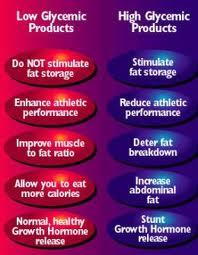

Very Low GI: Any foods above 30 GI, will refexively begin to cause cravings and hunger, increase ups and downs in blood sugar and insulin. Foods in the Range 50 GI and above, have an even more dramatic effect on cravings, hunger, blood sugar spikes and excess (hyper) insulinemia. Why stay under the 50 Glycemic Index ? The labeling of a food as " Medium" GI can lull you into a sense of security. Weight loss and management patients will quickly tell you to expect effects of weight gain, bloating, tiredness and hunger side-effects from Medium to High G.I..., any foods above Very Low 30 GI and over 7 to 8 Glycemic Load. ..... judge for yourself, medium GI foods: Coca-Cola=55-60, Snickers bar=55-60, fruit jam=51, ice cream=50+, potato chips=51-57 These foods may be medium, but anyone can tell they are not conducive to weight loss or weight management. Further details and lists of Glycemic Load will be added in a future blog.
30GI and under 31 to 49GI 50+GI....................
|
All meats have GI less than 30 All Hard cheeses have GI less than 30, Whole Cream, vinegar, mustard, olive oil, all oils, Hot sauce, Butter, Real mayonaisse, knorr gelatin, sugar-free Jello,Pork rinds... dark chocolate=25 |
Whole milk, Skim milk, Plain and Low fat Plain Yogurt(w/splenda), soy milk |
Chocolate Milk, Condensed milk, Yogurt w/Fruit, Ice Cream, Kudos snack bar=62, Mars Bar=62, Snickers=55-65, Coca Cola=55-60, popcorn=55+, potatochips=51-57, icecream 50-80, cornchips=72, fruit jam=51 |
|---|---|---|
| Grape Fruit, Cherries, lemons, limes | Green apple, Tart Pear, Dried apricots ( no sugar added), Strawberries, Blueberries, Black Berries, Rasberries, Avocado | All other fruit...apples, Bananas, Melons, Grapes, Kiwi, Peach, Mango, PineApple, raisins, Oranges,tangerines, Apricot, |
|
Leafy greens,iceberg lettuce, sprouted seeds, Romaine,, Spinach, Kale,Cabbage, Collards, Mustard Greens, Arugala, sea vegetables, Herbs, bamboo shoots, fennel |
||
| Artichoke,Asparagus, Bell peppers, Brocolli, Brussel Sprouts, Cauliflower, Celery, Green Beans, Mushrooms, scallions,cucumber | Tomato,Eggplant,turnips, Squash, Rutabaga, Pumkin, Onions | Parsnips, Potatoes, Corn, Yams,carrots |
| Green beens, Pigeon peas, Snap Peas,Winged beans | Lentils, Soy beans, lima beans, Chick peas, Blacked -eyed peas,Navy beans, Butter beans | Baked beans, Pinto beans, peas |
| Pearl Barley grain, Humus(homemade) chickpeas/Tahini | Rye grain, pumpernickle bread, Thin vermicelli, angel hair, Mung bean noodles,protein-enriched spahetti, whole-wheat spagetti, All Bran cereal, pasta w/egg | All breads, breakfast cereals, crackers, cakes and pastries, Most pastas(thicker =higher GI), Couscous, all rice, oats, rice cakes |
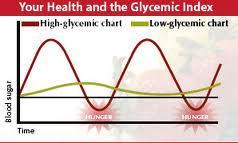
Basically, staying as much to the 30& under category ( low GL) will help with weight loss and maintenance. Straying into the 30 to 50 occasionally, but infrequently, is OK on the a weight maintenance/management diet. Avoiding the 50+ category is IMPERATIVE for weight maintenance and even more for weight loss. The timing of WHAT foods , and WHEN to use them is part of a complete , Physician guided weight-loss and management program. Results are different from person to person because we are not simple machines that can be placed on a similar regimen to obtain expected results. Clinical experience has shown that the whole individual must be accounted for and respected to manage the obstacle course of hormonal changes, metabolic changes, hereditary /genetic tendencies, underlying illnesses, sedentary lifestyle, cultural and familial obesity tendencies, work related limitations, sleep abnormalities and disruptions......on and on. There are a lot of headwinds we face when attempting to lose weight and attain a normal BMI and percent Body Fat of under 25.

